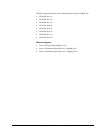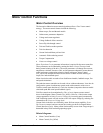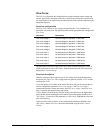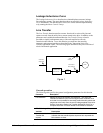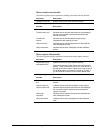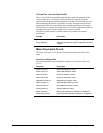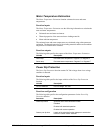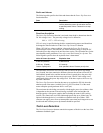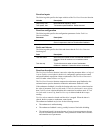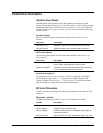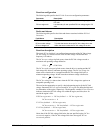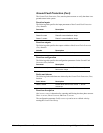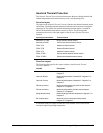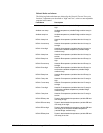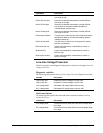
GEH-6385 Reference and Troubleshooting, 2300 V Drives Chapter 3 Paramters/Functions
•
••
•
3-51
Function inputs
The following table specifies the input variables of the Tach Loss Detection function.
Variable Description
Output freq, unfil Motor electrical frequency. Hertz
Tach speed, instr. Tachometer speed feedback. Radians/second
Function configuration
The following table specifies the configuration parameters for the Tach Loss
Detection function.
Parameter Description
Tach loss fault mode Specifies whether the drive reports a trip fault or an
alarm in response to the loss of tachometer feedback.
Faults and alarms
The following table specifies the faults and alarms that the Tach Loss Detection
function gives.
Fault Description
Tach loss alarm
Alarm that occurs when a loss of tachometer feedback is
detected. Drive will continue run in tachless control
mode.
Tach loss trip Trip fault that occurs when a loss of tachometer
feedback is detected. Causes the drive to coast stop.
Function description
The Tach Loss Detection function is not active when the parameter Motor ctrl alg sel
is set to Tachless control (that is, the drive is configured to perform motor control
and speed feedback acquisition without a tachometer). The Tach Loss Detection is
active for other values of Motor ctrl alg sel.
The Tach Loss Detection function compares the tachometer speed feedback to the
estimated motor speed to determine whether the tachometer feedback is valid.
If the tachometer feedback is invalid, the function takes one of two actions based on
the value of parameter Tach loss fault mode. If Tach loss fault mode is set to Alarm,
then Tach loss alarm is declared and the drive transitions to tachless mode. If Tach
loss fault mode is set to Trip, then Tach loss trip is declared and the drive stops
running.
Tach loss alarm cannot be cleared until the drive is stopped. When the alarm is
cleared, the drive returns to tachometer control mode.
The tachometer feedback may be lost for the following reasons:
• The tachometer is malfunctioning.
• The tachometer feedback is noisy, possibly because of bad cable shielding.
• The estimated speed is incorrect because of errors in motor parameters that are
used for estimated speed calculation. These parameters include rotor resistance
and saturation curve parameters.



